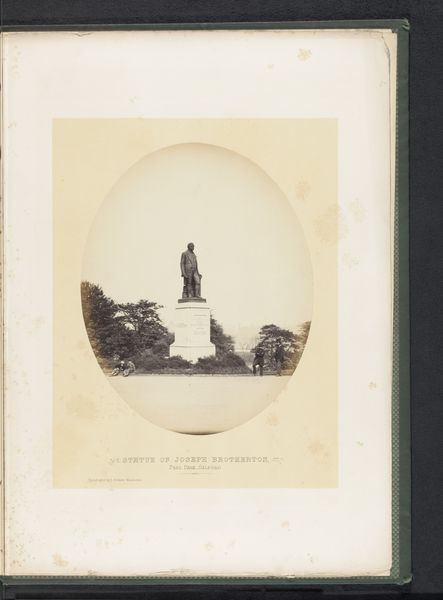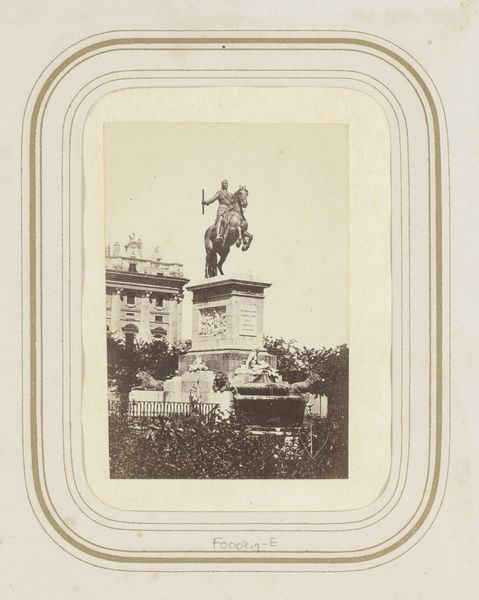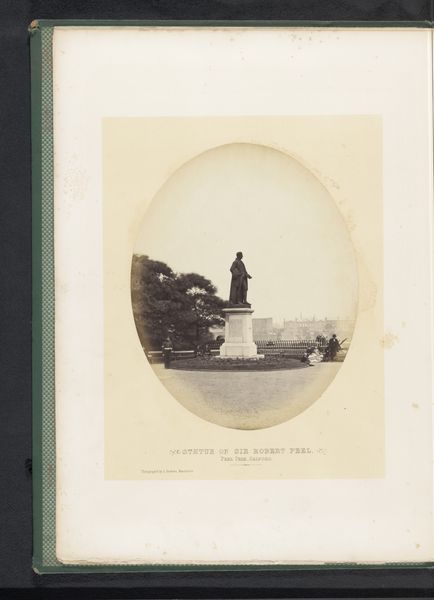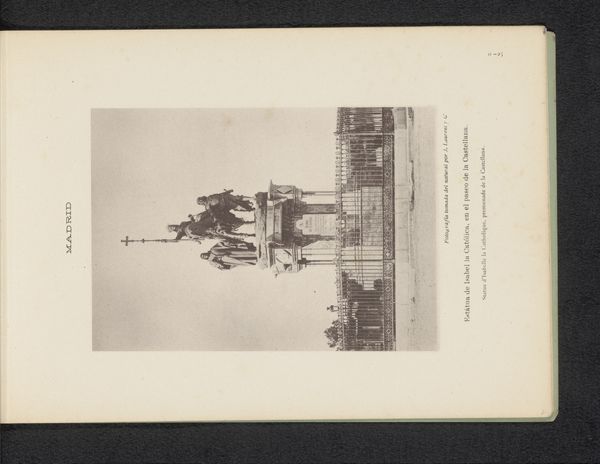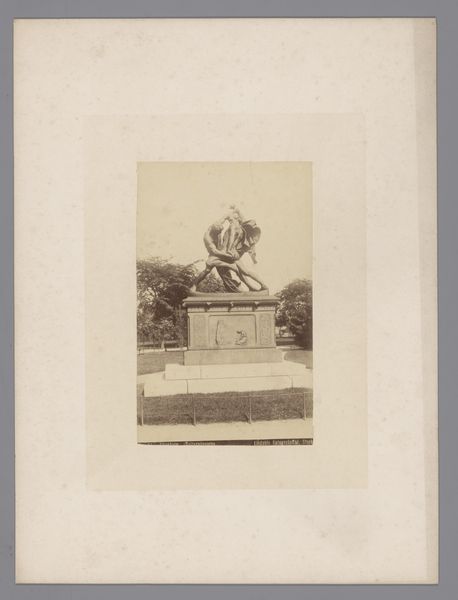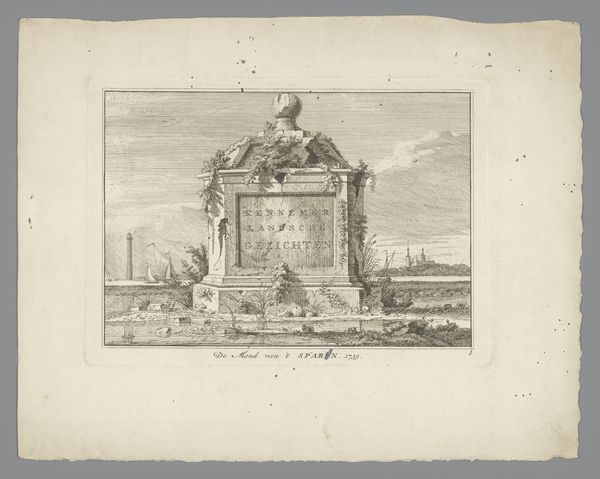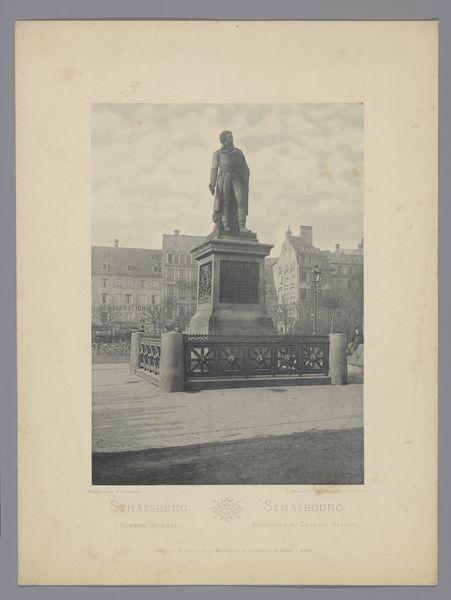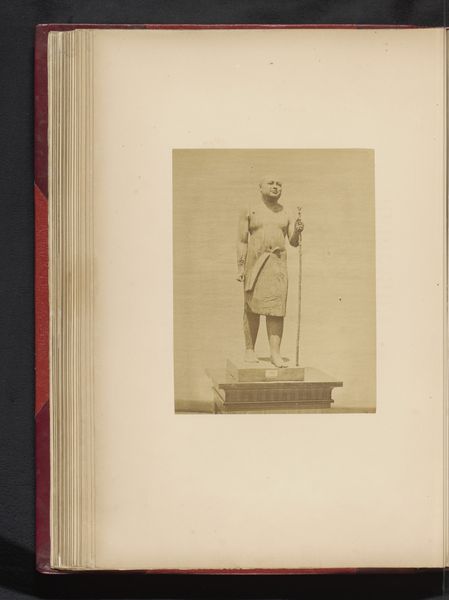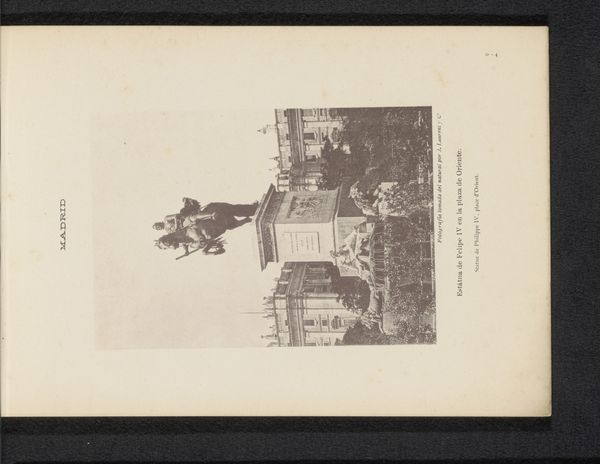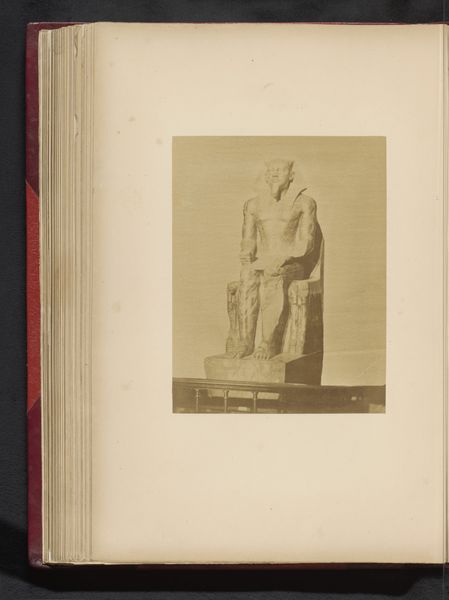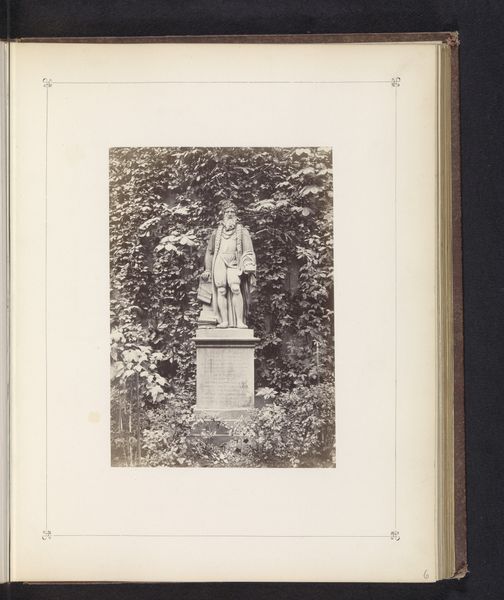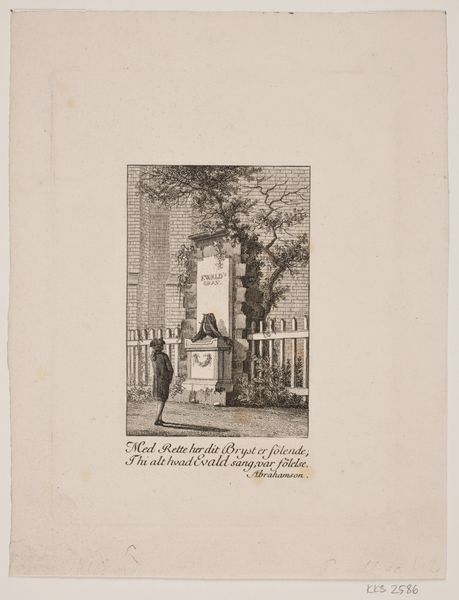
Gezicht op het standbeeld van Michiel Adriaansz. de Ruyter op de Boulevard de Ruyter in Vlissingen 1870 - 1890
0:00
0:00
Dimensions: height 85 mm, width 53 mm
Copyright: Rijks Museum: Open Domain
Editor: This albumen print, dating from 1870-1890, captures the statue of Michiel Adriaensz. de Ruyter in Vlissingen. It’s…stark. The landscape is barren and the statue imposing, even from a distance. How do you interpret this work? Curator: Immediately, I see the artist using visual rhetoric to portray De Ruyter as a figure of enduring strength. Consider the composition. Why place the statue so prominently, almost alone, against a vast and seemingly empty landscape? What emotional significance do you think the wide-open space contributes? Editor: It feels isolated, almost lonely. Like a forgotten monument. Curator: Perhaps. Or maybe it’s meant to signify dominance and control. De Ruyter was, after all, a celebrated naval commander. This isolation might amplify his importance, removing distractions and focusing attention solely on his legacy. Look at the shadows. Notice the angle? The deliberate highlighting of the statue hints at intended glorification through monumental permanence. Editor: That's interesting, I hadn't considered how shadow might add to the importance. Curator: Indeed. Images of national heroes gain greater resonance when seen as part of an unfolding history, their cultural value burnished through symbolic imagery. So, is this simply a photograph, or is it a deliberate act of myth-making? Editor: It's both, isn't it? I see how symbols carry layers of meaning. Thank you. Curator: My pleasure. Every image holds within it layers of intention, waiting to be discovered.
Comments
No comments
Be the first to comment and join the conversation on the ultimate creative platform.
